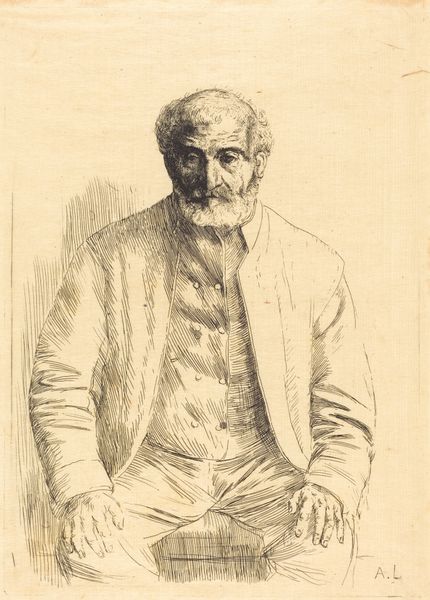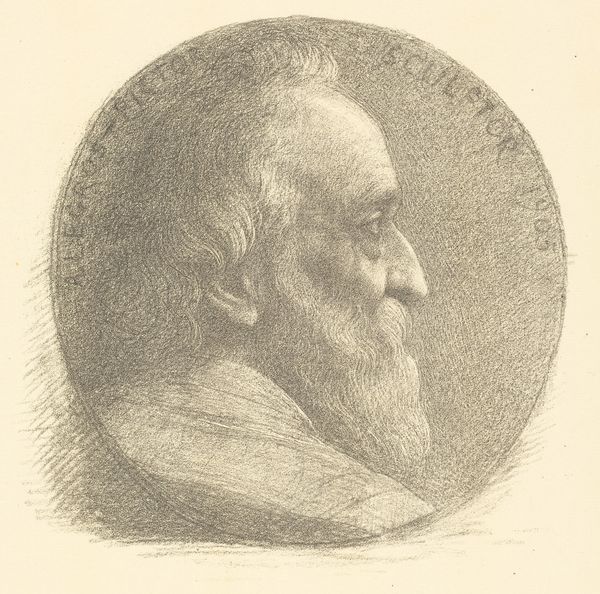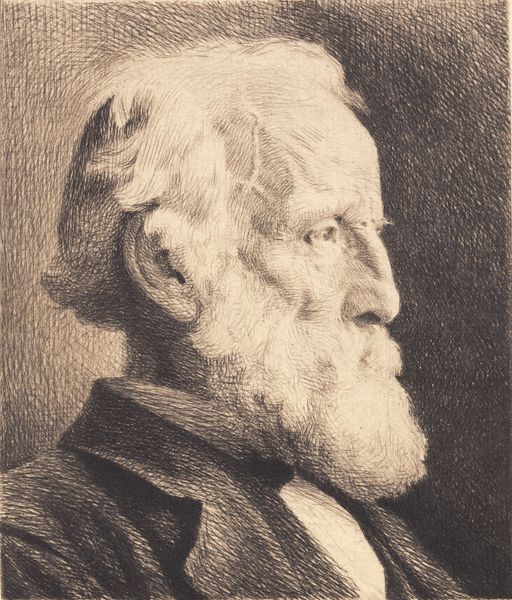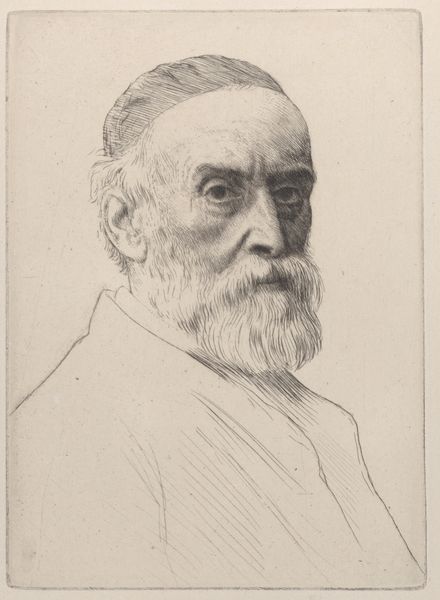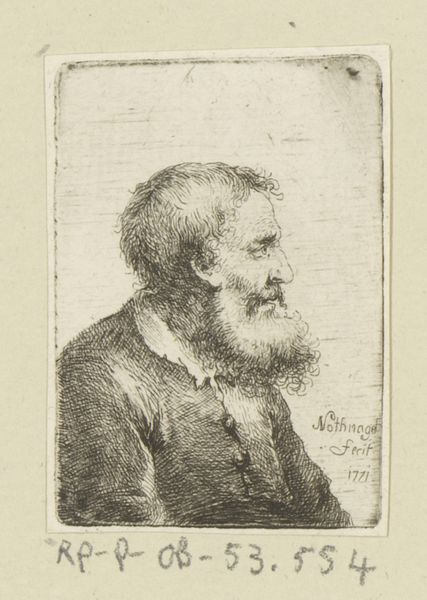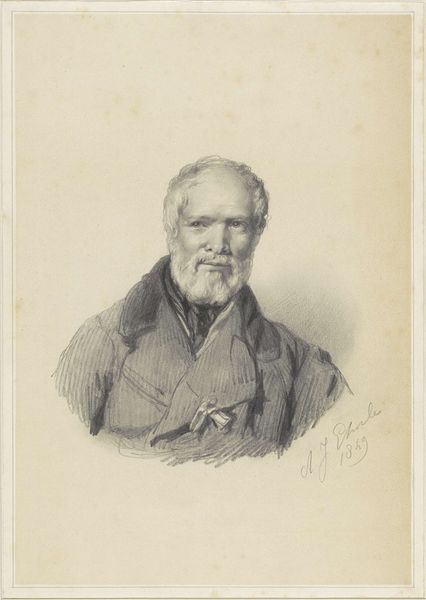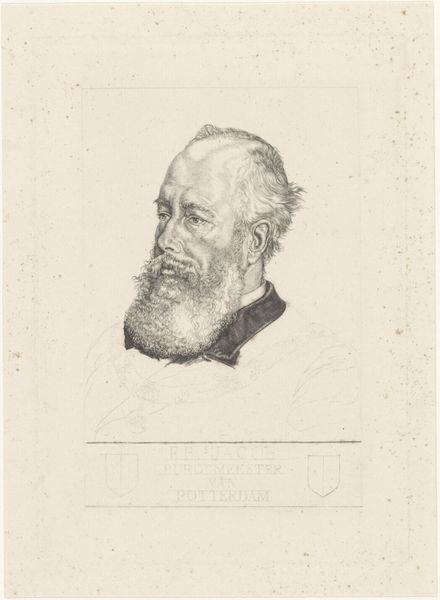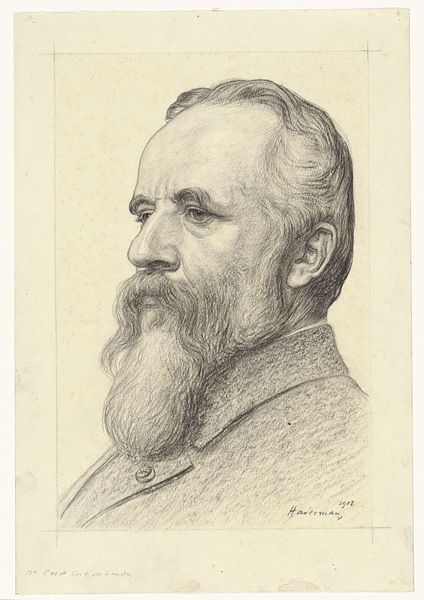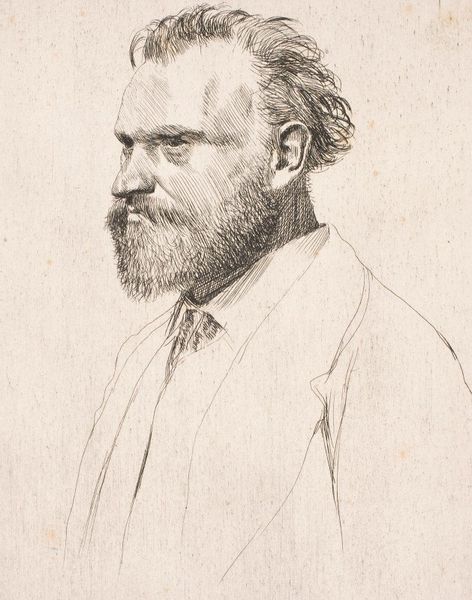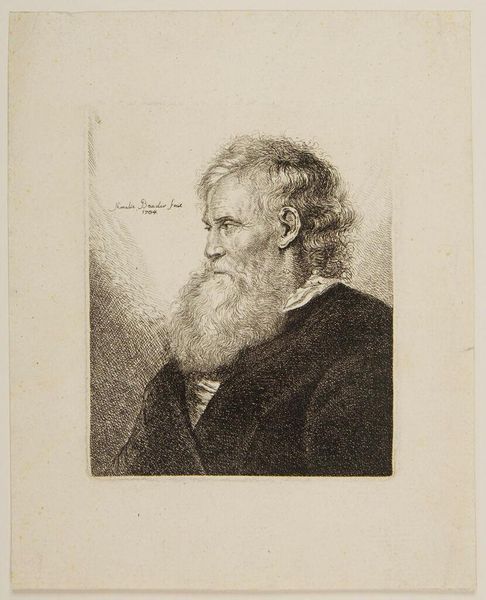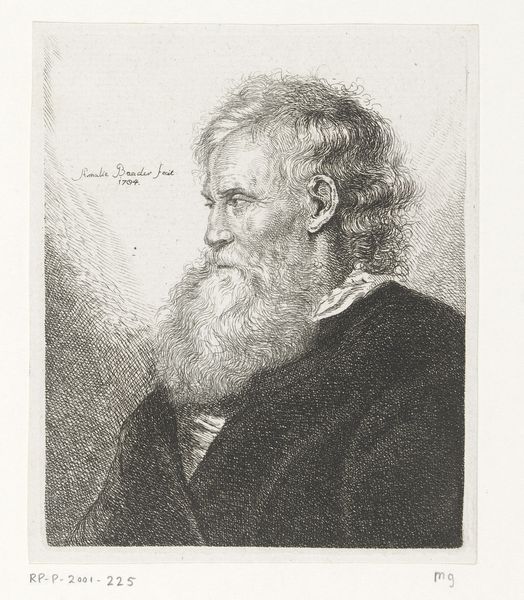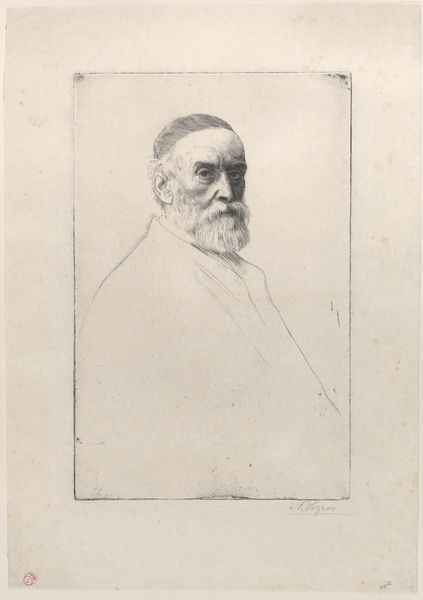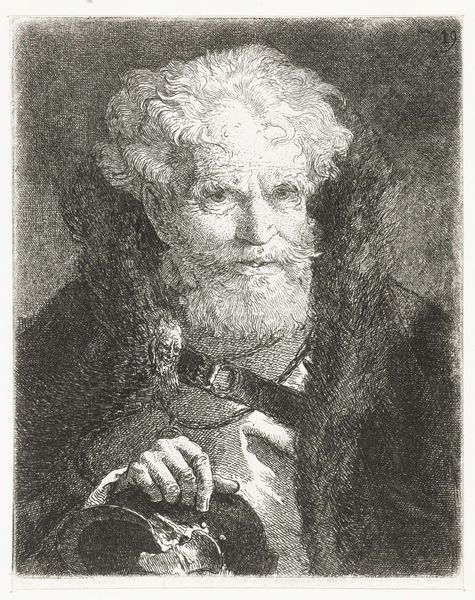
drawing, print, pen
#
portrait
#
pencil drawn
#
drawing
# print
#
portrait reference
#
pencil drawing
#
pen
#
portrait drawing
#
academic-art
#
portrait art
#
realism
Dimensions: 149 mm (height) x 116 mm (width) (bladmaal)
Curator: Here we have a drawing by Frants Henningsen, titled "F.L. Liebenberg," created in 1879. It is held in the collection of the SMK, the Statens Museum for Kunst. Henningsen, of course, was deeply embedded in the artistic circles of his time, often engaging with social issues in his art. Editor: It's a striking image. The subject's gaze is so direct, almost challenging. There’s a weight in the lines, a sense of serious purpose conveyed simply through pen and ink. I find myself wondering who Liebenberg was and what role he played in that era. Curator: Well, the very creation of this portrait, the decision to represent Liebenberg, positions him within a certain social framework. Portraiture, particularly in the late 19th century, often served to solidify status and convey social standing. Was he a patron, a politician, or perhaps a prominent figure in the arts? Editor: Right, and that context matters immensely. The way he’s depicted—the formal wear, the carefully rendered beard—suggests an aspiration to respectability, to power. Was Henningsen subtly reinforcing or perhaps even questioning those societal norms through this portrayal? Curator: It’s tempting to read against the grain. The academic style provides the framework, while a slight knowingness around the eyes, and the rapid application of ink in some areas might suggest a degree of ironic detachment on Henningsen's part. His artistic career did indeed blend an establishment style with socially conscious themes. Editor: It makes me consider how images like these are consumed today. What does it mean to view this portrait through a contemporary lens, understanding the historical baggage inherent in representing figures of authority? And also, thinking about class... who got to have their portraits drawn and who was systematically left out? Curator: Exactly! This work, then, becomes not only a depiction of an individual but a record of social values, the kind of image-making and power which reflected society at the time. Editor: Yes, a starting point for a conversation about power, representation, and the complex interplay between art and society. This image invites us to consider who is remembered, how they are remembered, and why. Curator: Indeed. It reminds us of the continuing need to unpack the histories embedded in seemingly straightforward representations.
Comments
No comments
Be the first to comment and join the conversation on the ultimate creative platform.
